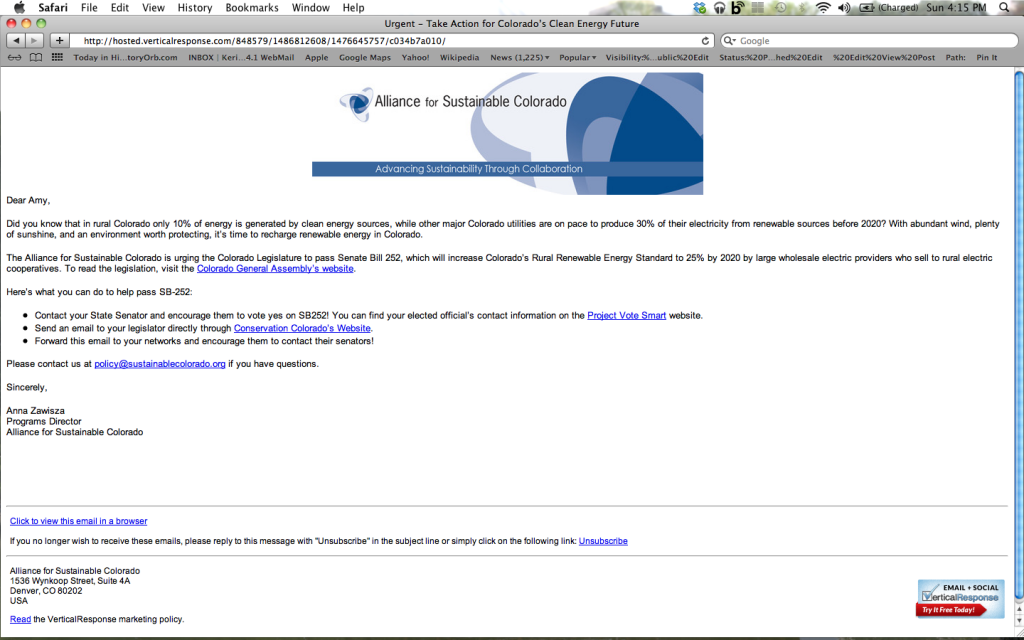Denver area eco-leftists have rural Colorado in their sights.
In a September 2012 letter to state legislative candidates, Colorado Environmental Coalition Executive Director Elise Jones (now Boulder County Commissioner) and Colorado Conservation Voters Executive Director Pete Maysmith implied that dirty air in the Denver metro area may be the result of rural Colorado’s not having a 30 percent renewable mandate:
While our largest utility has a 30% renewable energy target, most rural and municipal energy providers have only made a 10% commitment that is below the national average. Coal-fired power plants and vehicles are contributing to the smog and dirty air in the Denver metro area, and Coloradans statewide continue to be exposed to harmful mercury and other particulate emissions.
Just last week, eco-left progressives in the state legislature introduced SB13-252 to require rural co-ops to comply with a 25 percent mandate by 2020, which is significantly higher than the 10 percent to which they have committed already. And today, Sunday, April 7th, I received this message from the Alliance for a Sustainable Colorado, a Denver-based leftist environmental group:
Did you know that in rural Colorado only 10% of energy is generated by clean energy sources, while other major Colorado utilities are on pace to produce 30% of their electricity from renewable sources before 2020? With abundant wind, plenty of sunshine, and an environment worth protecting, it’s time to recharge renewable energy in Colorado.
The Alliance for Sustainable Colorado is urging the Colorado Legislature to pass Senate Bill 252, which will increase Colorado’s Rural Renewable Energy Standard to 25% by 2020 by large wholesale electric providers who sell to rural electric cooperatives.
It’s important to note that electric cooperatives are very different from investor owned utilities such as Colorado’s largest investor owned utility (IOU) Xcel Energy. In particular:
- Co-ops are private, independent, non-profit electric utilities. While IOUs are for-profit
- Co-ops are owned by the customers they serve. IOUs are owned by shareholders.
- Co-ops are incorporated under the laws of the states in which they operate;
- Co-ops are established to provide at‑cost electric service. IOUs provide electricity with a guaranteed profit margin.
- Co-ops re governed by a board of directors elected from the membership which sets policies and procedures that are implemented by the co-op’s management.
- Co-ops serve an average of 7.4 consumers per mile of line and collect annual revenue of approximately $15,000 per mile of line. While IOUs average 34 customers per mile of line and collect $75,500 per mile.
This bill, if passed, will be wildly expensive for rural Colorado. Perhaps Denver’s eco-left doesn’t understand the cooperative business model, but what is worse is that this eco-left cabal seems to be ginning up outrage directed at rural Colorado.








